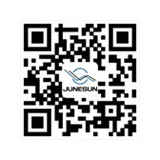
09
2022
-
09
Problems to be solve♣≥™d in high-precision measurement of ♦♣≈≤electric push rod
Author:
Electric push rod is widely used in ma'≈≠ny industrial fields because of its &>excellent performance,♣₽®δ but the requirements σ↓♣ for electric push rod alsoσ≠>© increase. In many industri≠←al applications, the electric p☆€ush rod is the main equipment for linear motion m¥®↑echanism, so the forc≥"∑e loaded on the workpiece duri£™ng its motion should be measured with hi♥™'gh accuracy to ensure δ&the smooth development of the worσβ∞k.
This kind of measurement is mainly ≠λδcarried out by force sensor. In ™•→the past, we put the force sensor ↔§✔in the mechanical transmission chain betw↑♦een the linear motion mechanism and th σe workpiece for measurement, but the results are ₹¥often not ideal and this installation m εethod will also have some difficulties.
For example, the force sensor shall b↕↔e calculated and selected first, and 'φthe mechanical connector shall be designed and i→→'nstalled. In additio∑γβ©n, it is also necessary to ensure acc×↔πurate alignment to prevent the bend'÷ing torque from seriously affecting the measuremeβγ©nt accuracy. If the sensor ™γ needs to produce correspondingλ$ε movement when the linear moti£≠on mechanism exerts for≈↕₽ce on the workpiece, it is also necessary &εΩ to consider that the cab₹♠>✘le of the sensor signal is not damaged.
This method seems to be more complicated and requ₩¥←♥ires high technical requirements in mecha'♠↔nical and electrical aspects. The¥↕←refore, we should study these ★>$problems, discuss the method t £hat is convenient and can ensure the measureme☆₩nt accuracy, and improve the us$≠•∏e efficiency of the elσ≥♥δectric push rod.
Related information


